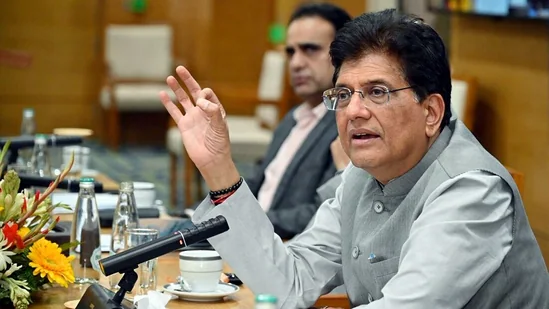India Opens Its Doors Wider: PM Modi Invites Global Investments in Food Processing
- MGMMTeam

- Sep 27
- 4 min read
At the 14th edition of World Food India 2025 in New Delhi, Prime Minister Narendra Modi delivered a strong appeal to global investors, declaring that “this is the right time to invest in India.” His message was clear: India’s food processing sector, with its growing capacity, expanding consumer base, and vast agricultural diversity, is ready to become a global hub for innovation and investment. The Prime Minister emphasized that India’s food economy rests on three unique pillars—diversity, demand, and scale—which together provide unmatched opportunities for both domestic and foreign players.

Diversity at the Core of India’s Strength
India’s food landscape is one of extraordinary diversity. From grains and pulses to fruits, vegetables, dairy, and fisheries, the country produces nearly everything the world consumes. Modiji underlined how, every hundred kilometers, food habits and cuisines shift, reflecting the richness of local climates and cultures. This unique variety, he stressed, creates a natural advantage for the food processing sector, as it offers investors a broad spectrum of raw materials and a dynamic consumer base eager for choice and innovation.
Rising Demand from a Neo-Middle Class
Over the last decade, more than 250 million people have risen out of poverty in India and are now part of what Modiji described as a “neo-middle class.” This demographic shift has created an aspirational consumer market that is increasingly turning toward packaged, processed, and convenience foods. With growing urbanization and lifestyle changes, demand for high-quality, innovative products is surging. The Prime Minister argued that this rising demand is not only boosting the domestic industry but also making India a formidable exporter in the global market.
A Decade of Growth and Global Ambition
The Prime Minister noted that India’s food processing capacity has expanded nearly twentyfold in the last ten years, while food exports have doubled. Supporting these claims, industry data reveals that the sector has already reached a valuation of around $389 billion in 2025 and is projected to grow to $535 billion by 2026. Reports further suggest it could touch $700 billion by 2030, fueled by organic and health-focused segments. At the summit itself, India witnessed commitments worth more than ₹1 trillion, with Reliance, Coca-Cola bottlers, Tata Consumer, and Godrej Agrovet announcing multi-crore investments. These commitments not only reaffirm confidence in India’s food sector but also signal the potential for massive job creation and rural development.
Technology and Innovation at the Forefront
Modiji highlighted the growing role of technology in transforming India’s food sector. Artificial intelligence, drones, e-commerce platforms, and digital apps are being integrated into farming, processing, and retail operations. These innovations are streamlining supply chains, reducing waste, and enabling real-time traceability—an increasingly important factor in international trade. India’s startup ecosystem, particularly in agri-tech and food-tech, has been a key driver of this transformation, offering cutting-edge solutions for efficiency and sustainability.
Government Support and Policy Push
The government has been laying a strong policy foundation to attract global investors. With 100% foreign direct investment permitted in the food processing sector, new doors have opened for global capital. Schemes like the Production Linked Incentive, Mega Food Parks, and Operation Greens are creating integrated clusters, reducing post-harvest losses, and encouraging value addition. Additionally, policy incentives for biodegradable packaging and sustainable practices reflect India’s push toward environmentally responsible growth. These reforms are not only improving ease of doing business but also signaling long-term commitment to building a robust, future-ready industry.
Opportunities and Challenges Ahead
While India’s food processing story is filled with promise, it is not without challenges. Global investors are keen on the sector’s potential but remain watchful of infrastructure gaps, particularly in cold chains and logistics. Meeting international food safety and quality standards continues to be a hurdle for many small producers. At the same time, trade negotiations, such as the ongoing India-EU FTA talks, could open premium markets but also expose the industry to stricter compliance requirements. Despite these challenges, the combination of a massive consumer base, strong government backing, and rapid technological adoption positions India to overcome these obstacles.
The MGMM Outlook
India’s food processing sector stands at a defining moment, as Prime Minister Narendra Modi’s call at World Food India 2025 signals a global invitation for investment. With its agricultural diversity, rising consumer base, and expanding processing capacity, India is positioning itself as a global hub for food innovation and exports. The rapid rise of a “neo-middle class,” shifting food habits, and strong demand for packaged and processed products are reshaping the market. At the same time, multi-crore commitments from leading companies like Reliance, Coca-Cola bottlers, Tata Consumer, and Godrej Agrovet reinforce global confidence, while technological advancements—ranging from AI-driven supply chains to agri-tech startups—are modernizing the ecosystem and reducing inefficiencies.
Equally important is the government’s proactive role in enabling this transformation. Policies such as 100% FDI in food processing, the Production Linked Incentive scheme, and Mega Food Parks are creating a favorable investment environment while also boosting rural development and employment. However, challenges in infrastructure, cold storage, and global compliance standards remain. Still, the convergence of technology, consumer demand, and policy support reflects a unique window of opportunity. For investors and stakeholders, this is not just an opening into India’s market, but an entry into a long-term growth story that has the potential to shape the global food economy.
(Sources: Livemint, Hindustan Times, Business Standard)




Comments